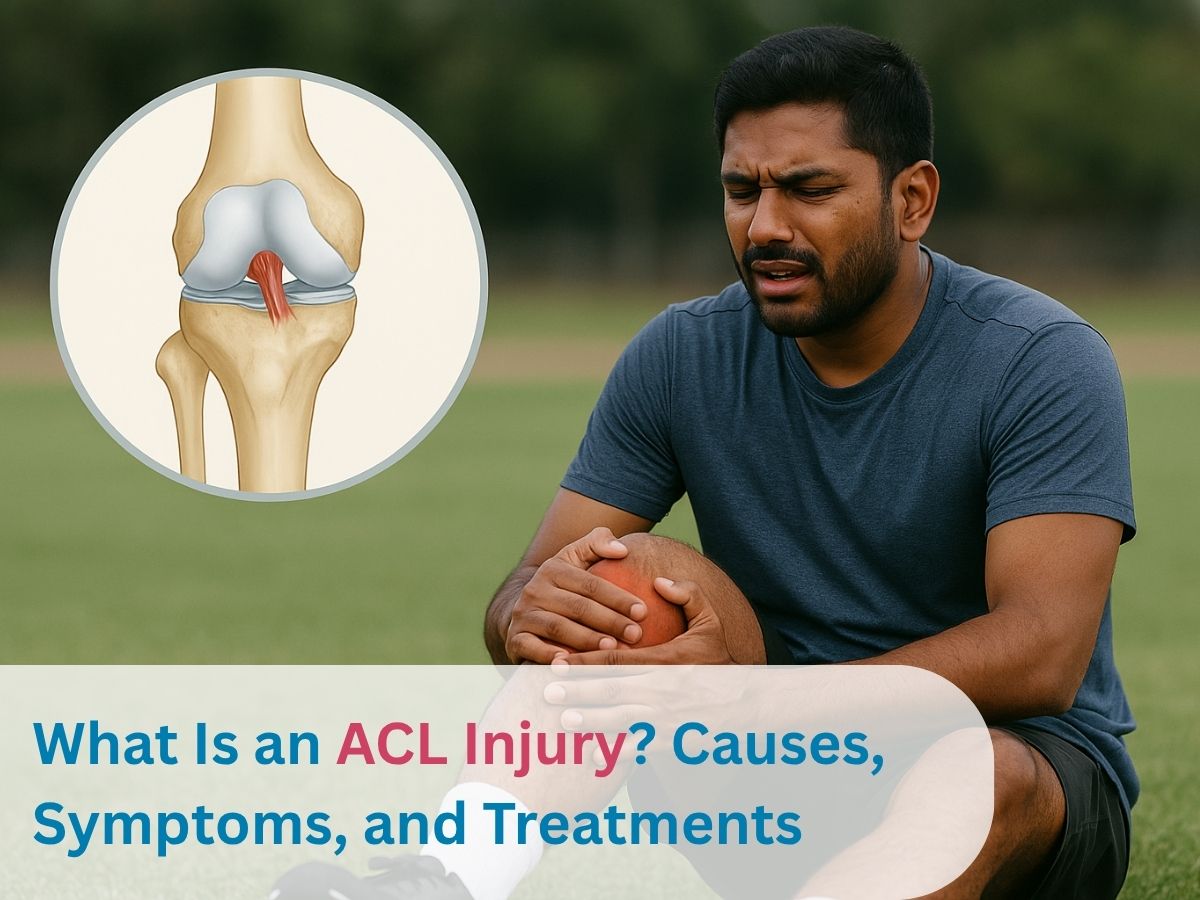
What Is an ACL Injury? Causes, Symptoms, and Treatments

Introduction: What is an ACL injury?
The knee is an often-overlooked joint, but is a quiet archivist. It keeps the record of your every dance, stumble, sprint, and stillness. And within it, folded like a secret beneath the skin, lives a cord called the ACL – the Anterior Cruciate Ligament. Not everyone knows its name. But once it tears, the silence around it breaks.
To say the ACL controls stability is accurate. But that is clinical language. What it really does is allow a person to trust their next step. It holds the bones in subtle tension, like a well-tuned sail between wind and mast. When it ruptures, the world becomes unpredictable. The ground feels unstable. The knee, which was once super reliable, becomes the very opposite of it – shaky and feeble.
How Do ACL Injuries Happen?
An ACL injury doesn’t need drama. It rarely arrives with blood or thunder. Sometimes, it happens during something as ordinary as a turn too sharp, a jump too rigid, or a landing that was just too much. In sport, in movement, even in joy – it finds its opportunity.
Imagine tension pulled too tight. A rope, braided over time – suddenly undone by a single overreach. That’s what the ACL endures in those fated seconds. The joint gives way. Often, a sound is heard – some call it a pop, some say it feels like something snapping behind the kneecap. Then comes the swelling, like tidewater, slow but certain. But the real wound is not always pain. It is mistrust. One no longer knows what the leg will do next.
ACL Tear Symptoms
Pain arrives, yes, but not always sharply. Instead, there is discomfort where grace once lived. The leg may feel foreign. Simple motions take effort. The act of standing still becomes a study in control.
Key signs of an ACL tear include:
- A sudden ‘giving way’ sensation in the knee
- Swelling within the first few hours
- Pain when walking, twisting, or straightening the leg
- Loss of full range of motion
- Inability to bear weight comfortably
The body rarely lies. It speaks in signals, not shouts. And the signs of an ACL tear are those signals – soft, insistent, and undeniable to those who are listening.
Non-surgical Treatment for ACL Injury
Not all tears demand scalpels. For many, especially those whose lives no longer involve sudden movements or physical exertion – the knee can be retrained. A new balance can be taught. Muscles can be coaxed to take on more responsibility. The body, after all, adapts. It always will.
Non-surgical management may include:
- Physiotherapy to rebuild strength around the knee
- Bracing to support stability during healing
- Lifestyle modifications to avoid movements that stress the joint
- Anti-inflammatory medication for pain relief
ACL Surgery and Recovery Time
For those whose work or identity is tied to movement – dancers, athletes, the agile-minded, ACL surgery becomes less of an option and more of a return.
The procedure itself is delicate. The torn ligament is replaced, often using a graft from the patient’s own tissue. It’s less like fixing, and more like reweaving. The best ACL surgeons in Hyderabad understand this. They are not merely technicians, but craftsmen working with biology’s finest threads. After the operation, healing begins in earnest. Not just the closing of wounds, but the slow resurrection of strength. One must learn to trust the leg again. That trust is earned in millimetres and measured in months. Six to eight weeks may bring back normal walking. But the full arc – from vulnerability to agility, can take six, sometimes nine months. This is not failure. It is simply the pace of normal recovery.






